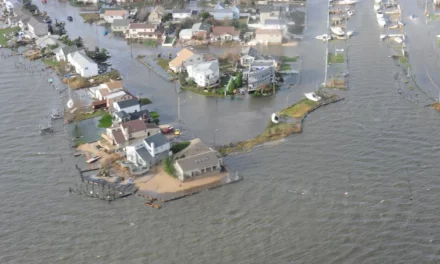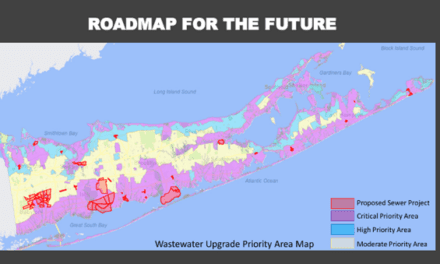One of Long Island’s most volatile Superfund sites is finally on the road to recovery, thanks to sound planning.
Port Jefferson, the quaint harbor-front village that is one of Long Island’s most vibrant, has been, for decades, home to the region’s nastiest Superfund sites. Lawrence Aviation Industries, located in the area since 1959, once produced titanium sheeting for the booming aeronautics industry. With the Cold War long over, the sprawling Lawrence property became a 160-acre toxic waste site, thanks to the company crushing 1,600 drums of hydrofluoric acid, TCE, PCE and other post-industrial goodies into unprotected soils, straight into the aquifer system. The side was notoriously added to the EPA’s National Priorities List in 2000, while Suffolk County and the EPA worked aggressively to figure out a plan for the site’s remediation.
The plan for the site, the appropriately named Lawrence Aviation Land Use Plan (or LUP for short) is currently being considered for by the Town of Brookhaven to be incorporated into the municipality’s overall Town Comprehensive Plan. The latest step to be taken is approval of the plan currently being considered by the Suffolk County Planning Commission.
The goal of the LUP? To cluster industrial development on the site by rezoning six parcels within the bounds of the study area from permitting residential development (which is generally frowned-upon on a toxic waste side) to a more flexible Light Industrial designation. Light Industrial usage blends in the with surrounding area – simply put, anything is better than the toxic waste for the residents in the area.
The plan was born after years of moratoriums imposed by local government, civic group and fire and school districts, with each group working to get the future vision right. The current zoning, as noted by the LUP and Suffolk County documents, would allow for 81 single family homes. Making the Lawrence Aviation site even more of a boondoggle for all involved is a growing fiscal nightmare, all thanks to an outstanding tax lien of $11.2 million spread across different tax map parcels. As per standard practice, the EPA has recommended that the site be restricted to commercial and industrial use – a recommendation echoed by a 1996 Town Comprehensive Plan for the area.
The Town of Brookhaven, Suffolk County, residents and EPA should all be commended for their decades-long battle to right the wrongs that the aviation company brought to the community. With so much talk regarding Long Island’s inability to accomplish anything, the Lawrence Aviation Land Use Plan represents that, yes, we can still come together and improve our community, all while being smart about it. The group who formed the plan wisely took their time with hashing out the future of the site.
The call for more light industry in the area is a great concept, as is clustering, an urban planning practice that allows for maximum development potential while maximizing open-space gains. The best piece of the LUP is the call to incentivize green energy production on the side, an ironic dig at the site’s national legacy. Green energy being produced on a former environmental nightmare? Sound planning indeed.
When I wrote my senior thesis at Fordham University, I used Lawrence Aviation as an example of land usage adversely impacting the sole source aquifer. I’m glad to see the site inch toward reuse.
In a region clogged by patronage, crippled with bureaucratic gridlock and resident/stakeholder shortsightedness, it’s refreshing to write that, for once, Long Island got it right.













